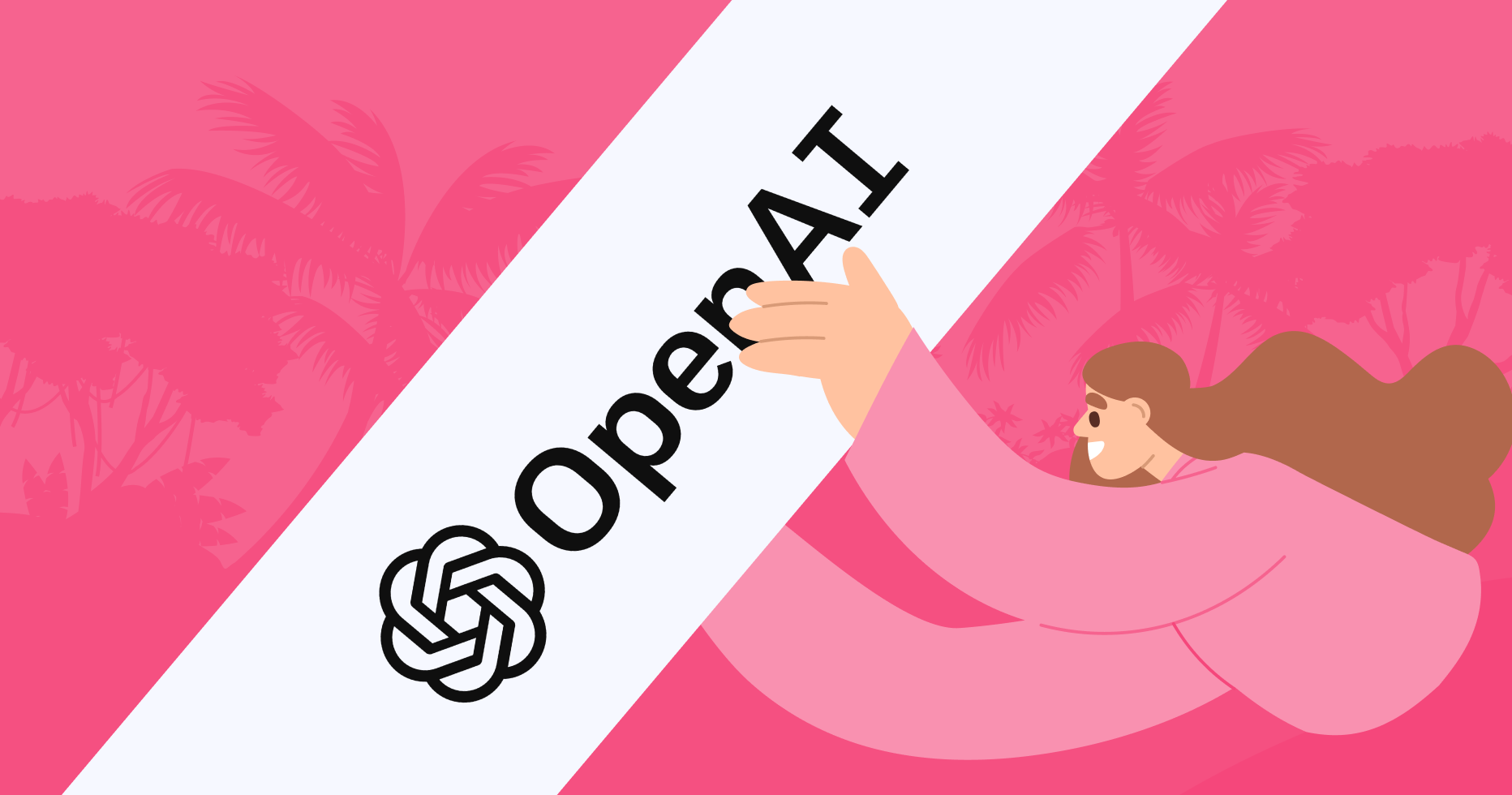What is ChatGPT?
ChatGPT is an AI–powered chatbot platform developed by OpenAI that can generate human–like responses to a wide range of prompts. This model has been trained on massive data sets, allowing it to understand and generate natural language responses to various topics. It can understand context, develop relevant and informative responses, and learn from previous interactions. Its capabilities include summarizing text, answering questions, and generating creative writing prompts.
But don’t take my word for it. Let’s ask ChatGPT what it is exactly. When prompted with the question, “what is ChatGPT?” the AI–writing tool responded:

For travel bloggers, ChatGPT can help generate ideas for travel blog posts, provide travel recommendations and advice to readers, and even assist with creating itineraries. With its natural language processing capabilities, ChatGPT can understand the nuances of travel–related questions and generate relevant and informative responses that are helpful to both the blogger and the reader.
Essentially, ChatGPT helps travel bloggers make their blogging process more manageable. The easy–to–use interface lets you quickly create blog posts without manual research while automating tasks like formatting text, saving time during your editing process.
ChatGPT Pricing Options
One of the best parts about ChatGPT is its pricing options for individuals and public use. It’s one of the few AI–powered writing tools for travel bloggers, writers, and content creators with little to no cost.
- Free Plan – Access ChatGPT’s dialogue format to give the AI commands and prompts to generate high—quality content quickly.
- ChatGPT Plus – OpenAI currently offers a plan upgrade at $20 per month. The upgrade grants users faster response speed, priority access to new features, and availability when demand is high on the platform.
ChatGPT generates income by selling commercial licenses to large companies and corporations to power their natural language processing capabilities. These companies unlock ChatGPT’s full potential; the available version of ChatGPT for blogs and general public use is merely a “playground” of the AI’s many features.
However, the AI’s “playground” version is still an incredibly powerful tool for content creators.
What Features Does ChatGPT Offer?

ChatGPT is one of the easiest–to–use AI–writing tools for bloggers while offering many reliable features:
- Text Generation: the AI–writing tool can generate human-like responses based on your inputs, including creative writing prompts, summarization of text, blog post titles and outlines, and article generation.
- Conversational Agent: ChatGPT can engage with users naturally and engagingly. It can answer various questions, provide recommendations, and assist with tasks such as travel planning.
- Translation: ChatGPT can translate text from one language to another, making it useful for communication across language barriers.
- Sentiment Analysis: ChatGPT can analyze the text’s tone and provide insights on whether it’s positive, negative, or neutral. This feature can be helpful in areas such as social media monitoring and customer feedback analysis.
- Question Answering: the chatbot can answer different questions using a vast knowledge base drawn from large data sets, from trivia to complex factual questions.
- Image Captioning: ChatGPT can generate descriptive captions for images, making it useful for image recognition and processing tasks.
Who is ChatGPT For?
ChatGPT can benefit anyone looking to generate creative and engaging content quickly and efficiently for various industries, from marketing and advertising to journalism and education. A few notable beneficiaries include:
- Marketers and Copywriters – These professionals must regularly generate high–quality content to attract and engage their audience. ChatGPT can help save time and increase productivity by providing creative ideas, headlines, and complete articles. With ChatGPT, these professionals can focus their energy on other aspects of their work, such as strategy and analysis.
- Students – ChatGPT can assist students with generating ideas for research papers and essays, collecting data and pertinent information, and proofreading and editing.
- Researchers – While the AI–powered tool can’t do the hard research, it can assist researchers in quickly generating summaries and abstracts for their work. Other useful features for academics and researchers include language translation and proofreading.
- Creative and Performance Arts – ChatGPT can assist individuals in creative industries, such as screenwriters, novelists, and poets, by providing inspiration and ideas to help them overcome writer’s block and generate new and innovative content.
- Business Professionals – ChatGPT can assist businesses in generating ideas for marketing campaigns, product descriptions, and social media posts. Additionally, ChatGPT can assist in generating automated responses to frequently asked questions, providing customers with quick and accurate information and freeing up time for customer service representatives to handle more complex queries.
- Writers – the AI–powered tool can be helpful for individuals who simply want to improve their writing skills, helping users develop their abilities by providing writing prompts, feedback, and suggestions.
Overall, ChatGPT is a powerful tool that can be useful for a wide range of individuals, whether you’re a content creator, researcher, business professional, or simply someone who wants to improve their writing skills.
Does Google Frown On AI–Written Content?
Many bloggers are worried that Google will frown upon AI–generated content, but this is one of the many myths surrounding AI–powered writing tools. Google’s primary concern is and has always been “people–first.” Your content must be helpful, original, and valuable to your readers. Whether or not it’s generated via humans or AI doesn’t matter. Google made this stance clear in a recent press release.
So while it’s essential to make sure your blog posts are unique and well–written, you don’t have to be afraid of using AI tools like ChatGPT to help streamline your blogging process.
How Can I Use ChatGPT for Travel Blogging?
One group that can benefit from ChatGPT is travel bloggers. Travel blogging requires the creation of engaging content that captures the essence of a place, its people, and its culture. It’s why most travel bloggers do it. And by utilizing ChatGPT, you can focus more on these creative pursuits while delegating tedious tasks to artificial intelligence.
As a travel blogger, ChatGPT can help you create content quickly, allowing you to focus on more enjoyable aspects of your blog, such as photography, research, social media, and monetization with affiliate platforms like Travelpayouts. The tool can also provide a wealth of information about potential destinations – receiving in–depth answers about local customs, history, and attractions to provide insightful content to your readers.
Here are other ways you can utilize ChatGPT to streamline your blogging efforts.
Topic Research
You can use ChatGPT to research topics for potential posts on your travel blog. The AI tool helps you brainstorm topics to write about.

To demonstrate ChatGPT’s topic research capabilities, I’ve prompted ChatGPT to generate ideas for a blog post regarding “Scuba Diving in Puerto Rico” for my website, OceanWide Explorers.
Without much input, the AI–powered writing tool developed ten quality ideas for blog posts about the topic. Each ChatGPT output approached the subject with a unique spin, granting me options to focus on one that perfectly fits my niche.
Blog Titles
ChatGPT quickly develops catchy and SEO–friendly titles to attract readers and help you stand out. Using ChatGPT’s library of AI–generated topics, you can quickly narrow down potential post titles and identify relevant keywords for maximum reach and visibility.

To continue with our example about a blog post regarding “Scuba Diving in Puerto Rico,” I had ChatGPT generate ten blog post titles about one of my experiences. Each title was unique, albeit some corny, yet all captured the essence of the post idea.
Content Outline Creation
Creating content outlines is an essential part of the blogging process, and travel bloggers can use ChatGPT to make this task easier. ChatGPT offers AI–generated outlines for blog posts based on user interests, making narrowing down potential topics within a blog post easy.

When prompted to generate an outline for one of the blog post titles earlier, ChatGPT produced a bullet–style overview laced with SEO–friendly keywords, common questions readers might have, and other interesting tidbits of information to boost SEO. Honestly, the outline is fantastic, and I would use it for the blog post with minor tweaks.
Writing Blog Content
With its natural language processing capabilities, ChatGPT can help generate first drafts, introductions, and blog sections quickly and efficiently, saving you valuable time and effort. Simply provide the model with a brief or topic, and ChatGPT can develop high–quality, informative, and engaging content for your travel blog.

Pictured above is the output from ChatGPT when given a reasonably specific prompt. The content is relatively accurate and grammatically correct while providing valuable insights about the topic to potential readers – it’s a great building block to develop an engaging blog post.
However, for the foreseeable future, always plan on editing AI–produced content to some degree – no matter how clean the outputs appear. Frequently, these outputs are factually inaccurate or indicate biased information. It’s always important to proofread, edit, and revise before publishing to your website.
To learn more about using AI–driven content creators for blog writing (including others like Jasper and Copy.ai), check out our webinar, How to Use AI to Write Engaging SEO–optimized Articles.
Social Media Content
ChatGPT can generate high–quality social media content for many popular platforms.
- Instagram – ChatGPT can assist in generating catchy and informative Instagram captions that effectively convey the message or purpose of the post. It can also suggest relevant hashtags to help the post reach a wider audience.
- Facebook – ChatGPT can help generate engaging posts, encouraging likes, comments, and shares. Businesses and organizations can improve their social media engagement and reach by using the model to craft attention–grabbing headlines and captions.
- Pinterest – ChatGPT can generate creative content for platforms like Pinterest, which relies heavily on high–quality images and captions. ChatGPT can suggest keywords and phrases that help optimize content for search, increasing its visibility and reach.
- YouTube – ChatGPT can help create informative and engaging YouTube video descriptions that summarize the video’s content and encourage viewers to watch.

You can use the model to generate creative and informative content to improve your social media presence and effectively connect with your audience.
Email Content
ChatGPT can assist in developing catchy, informative, and attention–grabbing email subject lines and marketing campaigns. Simply input keywords related to your email’s content or purpose, and the model will generate multiple subject line options and persuasive email copy that effectively communicates your message.

After prompting ChatGPT to produce a marketing email to promote my blog post, the chatbot created a suitable copy for one of my email campaigns. Again, if anything, I would slightly tweak a few things to infuse personalized voice and tone into the email.
Proofreading and Editing
ChatGPT can proofread and edit your content by analyzing the language and context of the writing. It can suggest corrections for grammar, punctuation, and spelling errors and provide suggestions for improving sentence structure and overall readability. Additionally, ChatGPT can suggest changes to improve the flow and coherence of the writing, ensuring that the content is engaging and informative for readers.

For example, I asked ChatGPT to edit a snippet from a video transcript I wrote about encountering a sea turtle while scuba diving in Puerto Rico. The tool seamlessly produced a more concise and grammatically correct version of my initial write–up, while providing insights into the changes it made and why.
Rephrasing

You may need to rephrase content for various reasons, including avoiding plagiarism, making content more readable, or simplifying complex information for a broader audience. Rephrasing can also help you add your unique voice and perspective to your writing.
The chatbot accomplishes rephrasing by generating alternate versions of existing text. You can input the original text into the model, and ChatGPT will suggest different ways to express the same ideas using synonyms and alternative sentence structures. The tool can also help you summarize longer passages into more concise sentences or paragraphs.
What I Liked About ChatGPT
Researching and testing ChatGPT for this article had me walking away pleasantly surprised about the technology. Compared to other AI–powered platforms, there’s a lot to love about ChatGPT.
- Natural Language – With the recent update of ChatGPT–4, I was astounded at the conversational tone the AI elicited. It felt like I was talking to another person. Coincidentally, the outputs for blog content seemed genuinely human and didn’t sound clunky or robotic.
- Easy–to–Use Interface – it appears ChatGPT has gone the route of simplicity. No templates. No complicated inputs. Simply tell the tool exactly what you want, and it produces a quality result – making this AI tool the best for beginners.
- Language Translation – ChatGPT supports over 30 languages, and switching between them was amazingly easy.

- Cost Effective – ChatGBT has the most features available for no cost than any other AI–driven content creator.
- Non–repetitive – to go along with the Natural Language Processing, ChatGPT does a great job of not repeating itself. Playing around with other technologies like Jasper, the AI will repeat a generic copy produced during the session. ChatGPT’s interface avoided much of this and had original, non–repetitive outputs.
What Could Be Improved?
ChatGPT is a fantastic tool for you and your future travel blogging endeavors. The AI-driven content creator is an immense resource to bring your goals to the next level by seamlessly achieving mundane tasks in seconds.
However, some things on ChatGPT could be improved, particularly compared to other AI-driven technologies.

- Frequent Glitching – ChatGPT is all the rave these days, and the platform receives an overload of visitors utilizing the service. Because of this, ChatGPT frequently lags out of service at random moments. Reportedly, subscribers to ChatGPT Plus receive priority during busy times.
- Plagiarism – although uncommon, I did encounter repeat content on ChatGPT at a far greater rate than other AI tools like Jasper. It’s not a massive deal, as you can have ChatGPT rephrase its output, but it’s something to be aware of when using the tool.
- Biased Outputs – as with any AI–driven technology, the output is only as good as the data it draws upon. Often, this data heavily skews toward biased opinions or distorted facts.
- Lack of Templates – Unlike other AI–driven content creators like Copy.AI and Jasper.AI, ChatGPT doesn’t offer templates or document builders. The platform is entirely a simple chatbox simulating a conversation.
- Limited Knowledge of Current Events – despite the latest update of ChatGPT–4, OpenAI states the technology lacks knowledge following the events of early 2021.
Final Thoughts on Using ChatGPT
Overall, my experience with ChatGPT was incredibly positive. I highly recommend it to other travel bloggers looking to streamline their content creation process. The platform’s AI technology has saved me countless hours of brainstorming and writing, allowing me to focus on other aspects of my blog, attracting more readers, and growing my audience.
But creating great content is only one piece of the puzzle to running a successful travel blog. You must partner with the right affiliates to monetize your blog and turn it into a thriving business. That’s where Travelpayouts comes in.
With access to the most popular travel brands and powerful tools to help you track your earnings and optimize your affiliate strategy, Travelpayouts is the perfect partner for travel bloggers serious about turning their passion into a profitable business. So why not try it and see how it can help you take your travel blog to the next level? With the combined power of ChatGPT and Travelpayouts, there’s no limit to what you can achieve.




